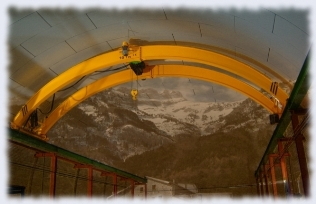Speaker
Luis M Fraile
(Universidad Complutense (ES))
Description
The direct measurement of reaction cross-sections of stellar nuclear reactions is hindered by experimental difficulties, particularly the very small cross-section
values at the Gamow peak and the high background arising from the cosmic ray interactions. At the Earth's surface the low signal to background ratio can be
overcome up to a certain limit by active and passive shielding and by a suitable
choice of the experimental technique. But attaining the required sensitivity at low energies requires a further reduction of the background, as can be achieved at underground laboratories.
The Canfranc Underground Laboratory provides an excellent site for an accelerator-based nuclear astrophysics facility. With a depth of 2400 meters water equivalent it offers a reduction of the neutron flux down to the level of 2 x 10-2 m-2s-1 and a reduction of the muon flux to about 3 x 10-2 m-2s-1. Under these conditions, the
Canfranc Underground Nuclear Astrophysics intends to develop an experimental nuclear physics programme, with the main purpose of studying the 13C(α,n)16O and 22Ne(α,n)25Mg reactions, which have been identified as the dominant stellar neutron sources for the s-process.
I will briefly describe the main components of the project as presented in the Letter of Intent to the LSC scientific committee and the present status.
The presentation will address the Physics case, the ongoing background measurements and simulations, the hall design study and future prospects of the facility.
Author
Luis M Fraile
(Universidad Complutense (ES))

